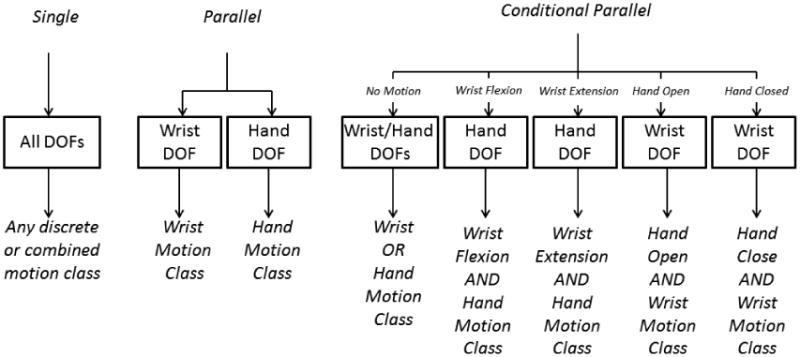Fig. 1.

Block diagrams describing each classification strategy for 2-DOF simultaneous wrist and hand movements. This diagram only shows classification strategies for 2 DOFs, but these techniques can be extended to include more DOFs by adding additional classifiers for the parallel and conditional parallel strategies. Each box is an LDA classifier with motion classes from one or more DOFs as indicated by their label. The single LDA classification strategy (left) discriminates all discrete and combined classes as separate motions. The parallel classification strategy (middle) discriminates each DOF individually using two LDA classifiers. The conditional parallel strategy (right) has a separate classifier for each motion class, where each classifier has a class for a specific discrete movement and classes for each combined movement in which the discrete movement is one of the two movements.. The two classifiers that choose the same combination of motions determine the output of the conditional parallel classifiers.
